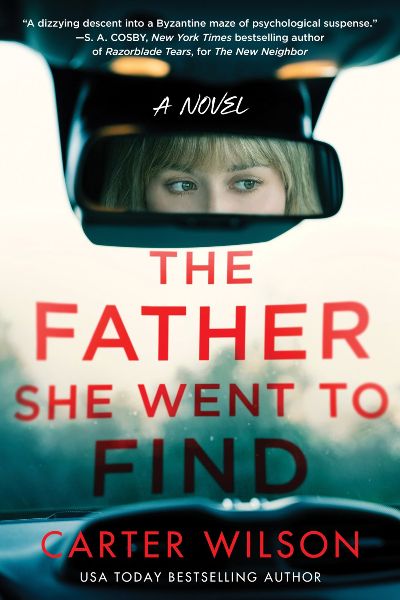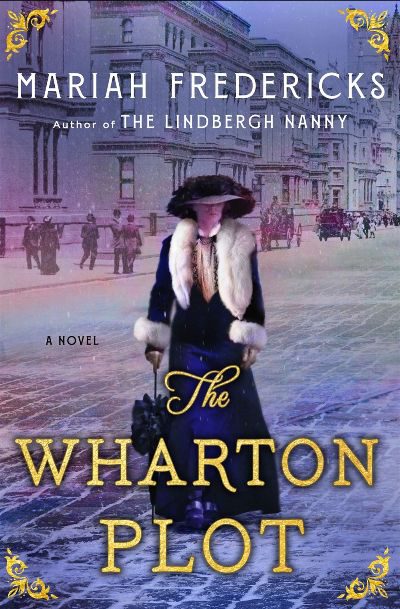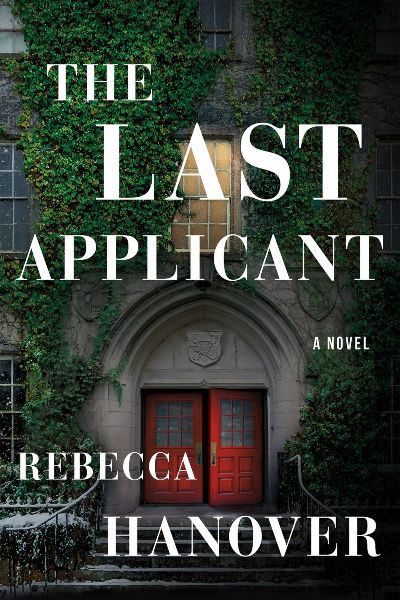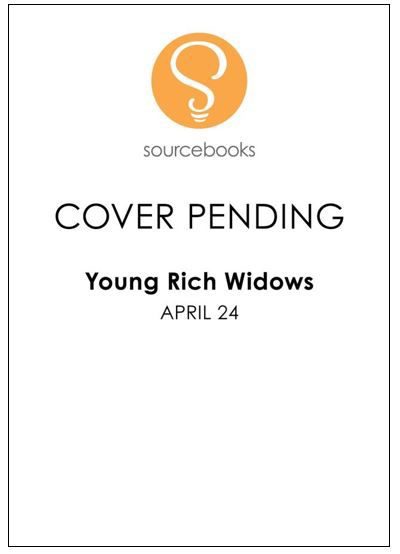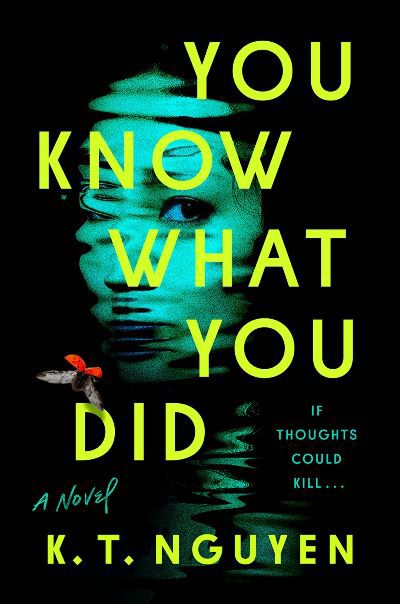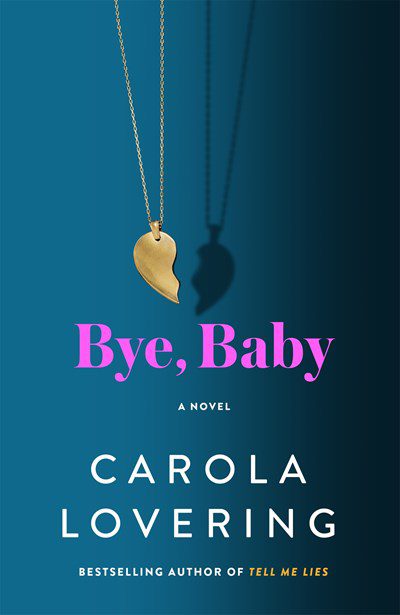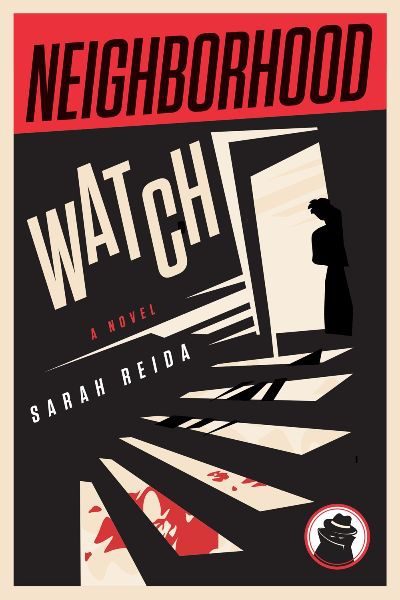A childhood fall down the stairs, for which she blames her alcoholic mother, caused a head injury that has left Penny Bly a savant with perfect recall of everything that has happened to her since the fall. She’s one of only 75 people in the world with this level of abilities, but it doesn’t feel so special: she’s lonely and rebellious, living in a facility where she’s always being studied. One of her only joys is receiving birthday cards from the father who abandoned her when she was a child, but when her 21st birthday card arrives, it bears a message that sees her leave the home and take a cross country trip to find him, encountering friendship but also terrible danger along the way. Penny is a fascinating character who’s full of extremes: off-the-charts intelligent but completely clueless when it comes to the real world; desperate for love but pushing everyone away; longing for safety but causing mayhem with her single-minded pursuit of a plan-less goal. Get ready for a wild ride and a WHOA ending.
Henrietta Thornton
Well-known for her excellent historical crime fiction—including the Jane Prescott series and, more recently, The Lindbergh Nanny—Fredericks surpasses even those efforts with this dazzling, magical foray into the life of Edith Wharton. It’s 1911, we are in New York City, and Wharton, nearly 50, is down in the dumps. Yes, she’s the witty, acerbic, and a brilliant conversationalist we imagine her to be. But it’s been six years since the publication of her last bestseller. Husband Teddy is mentally ill. Buddy Henry James is aging quickly. Her affair with Morton Fullerton would seem to be over. And all she really wants is to get back to Paris. In short, things aren’t so gilded. When David Graham Phillips, a handsome young novelist, is shot and killed in front of the Princeton Club, it piques Wharton’s interest. She had just met him the day before at tea in the Palm Court, and while her immediate reaction was disdain, as a corpse, Phillips is far more interesting. Who would want to kill a novelist, and why? What is so very brilliant about this novel is that Wharton’s search for the truth—which takes her from the publishing industry (hilarious) to New York society (terrifying)—is skillfully enmeshed with the challenges she faces as a woman, a writer, and a wife. In a particularly poignant scene, Wharton is walking home and realizes she is being followed. She finally turns to confront the perpetrator, only to discover it’s her feeble, slipper-clad husband, following her for fear she’ll abandon him. Sure to be one of the best books of the year, and a perfect choice for book groups that appreciate a rich context.
This novel takes place in the social black hole that sucks in (very) rich New York City parents: admission to the kind of private elementary school that costs the same as college. These institutions usually seem to be named with an eye toward Beatrix Potter characters attending—St. Bernard this, country that. This one’s called Easton but is nevertheless The School to attend. That’s why admissions director Audrey Singer is only surprised by the casual tone of a begging email from a mom who didn’t realize the application pool would be capped. Sarah Price is desperate, devastated, disconsolate, not to mention a little drunk, and fears she has “completely derailed” her son, Eli’s, future. Audrey makes the mistake of allowing an exception to the rules, and that’s all it takes: Sarah now begins to stalk the gatekeeper of her dreams for Eli, with her antics growing ever more unhinged as decision day grows closer. Fans of psychological thrillers and mysteries will lap up the tense moments created by the power imbalance between Audrey and Sarah; emotional ups and downs that stem from the women’s private lives add to the roller coaster effect. As the novel is episodic, cliffhangers will thrill readers at points, and there’s a completely unpredictable ending twist. Pick up this one if you enjoyed Chandler Baker’s Cutting Teeth or Sylvie Perry’s The Hawthorne School.
Artist Santlofer’s previous novel, The Last Mona Lisa, saw Luke Perrone, great-grandson of the man who stole the Mona Lisa, digging into his ancestor’s thievery, with Interpol also on the case. Perrone and the organization are back and chasing a painting that has long been rumored to exist: Vincent van Gogh’s last self-portrait. The work is mentioned in a letter by a friend of van Gogh’s as having been displayed at the artist’s funeral, but was it the mistake of a grieving friend? At the outset of the book, what may be the painting turns up, but greed and the less-savory machinations of the art world soon see it disappear. The book combines fiction and nonfiction, as explained by Santlofer in an absorbing interview that’s a coda to this fast-moving work. A real aspect is the sad dispersal across the world of Nazi-looted art, the tireless work by descendants of the real owners to retrieve it, and the equally tireless work of dishonest art collectors to keep it from being returned. Beauty and horror are wonderfully contrasted by Santlofer, both in the sad life of van Gogh compared to the incandescent art he produced, and in the clash of the love of art and the pursuit of wealth that takes advantage of that passion. Details of post-impressionist art and busting of myths around van Gogh (he wasn’t unknown as an artist during his life) are bonuses. A great accompaniment to this would be Mark Roskill’s Letters of Vincent van Gogh, as van Gogh’s correspondence with his brother Theo is often referenced by Santlofer.
Krystle, Meredith, Justine, and Camille are thrown together when their law-firm owning husbands, and in the case of Meredith, her girlfriend, are killed in a plane crash. The wives already knew and hated one another; the lone female partner in the firm was in the closet (it’s 1985), but is now firmly out, and Meredith joins in the animosity and puzzlement that’s freely flowing. Why were the partners on a plane back to Providence, Rhode Island from New York City, when they were supposed to be working in Providence that day? The reasons slowly become clear as the women are targeted by the town’s mafia for money that the deceased owed. Just when that danger wraps up, a twist hits the widows and readers as another…and another…perilous situation bears down on them. This book began life as an Audible original and its backbiting humor mixed with love and loathing makes it easy to see why it was such a hit and was brought to print. The authors’ note (there’s also a reading-group guide) explains that ‘90s humor-laden novels such as Married to the Mob and The First Wives Club provided inspiration; grab Young Rich Widows for some nostalgia, but it’s also just a fun romp for any thriller lover.
“Her mother’s approval was everything, her rejection absolute annihilation.” A daily does of annihilation is Anh Le’s lot as the child of a Vietnamese immigrant mother who is “from the ‘I criticize because I care’ culture.” Today, Mẹ, the mother, lives in the carriage house next to her artist daughter, now called Annie, who’s married with a sullen teen daughter, whom Mẹ calls a whore. After Annie finds Mẹ dead, things start to get even more difficult. Despite her OCD related to cleanliness, Annie must clean out the carriage house where her mother refused to throw out anything, even rotten food. At the same time, she takes on a new commission for her local benefactor, an elderly lady who doesn’t acknowledge Mẹ’s death (“China dolls needn’t have troublesome backstories”) and who promptly goes missing. At first, the police refuse to believe there’s any issue, but as further crimes come to light, they and Annie herself, who’s once again crippled by her compulsions, begin to wonder if she’s to blame. Nguyen delves deep into the trauma caused by war and the generations-spanning destruction it can unleash, but anyone who grew up feeling othered will recognize themselves here. A debut to remember, and what a gripping ending.
Though there’s a year between them, sisters Crissy and Betsy Dowling are so alike they could be twins. And they don’t only resemble each other, they also look very like one Diana Spencer, the late, lamented Princess of Wales. The resemblance is so strong that Crissy performs as Di in a long-running Las Vegas residency. The casino that hosts the emotional cabaret, the Buckingham Palace, or BP, has seen better days, as has Crissy’s relationship with her lookalike sister. Crissy claims that Betsy killed their mother, the circumstances around that a mystery for most of the book. But that doesn’t stop Betsy from re-entering her sister’s life by leaving her social worker job for her new boyfriend’s cryptocurrency firm that’s setting up shop in Vegas. When the owner of the BP is found dead, and Crissy doesn’t believe the police’s finding that it’s a suicide, it starts a chain of subterfuge and violence that makes the sort-of-royals wish that what happens in Vegas didn’t involve them. Bohjalian has intriguingly veered into a much more noir path than his usual, with the darkness complimenting his typical tight plotting and absorbing family drama. This is one for fans of campy fare mixed with family shenanigans and of Elle Cosimano’s Finlay Donovan.
New Yorker Billie has never wanted children. But the series of hurts chronicled over the course of this frenemies story find her standing in the apartment below her former best friend, Cassie’s, place, holding Cassie’s baby while her friend upstairs wails that there’s been a kidnapping. Most of this absorbing tale takes place in the present, when lonely Billie tries over and over to regain the closeness she had with Cassie when they were teens. But Cassie, who’s now a famous Instagram mommy, wants little to do with her. We also flash back to those teen years, when a incident involving Billie’s stepfather, whose sexual abuse of the girl is graphically described, has been kept a secret by Billie and Cassie, leaving them emotionally tied but perhaps also causing their estrangement. As in her Can’t Look Away (2022), Lovering nails the bizarreness of obsessive love—Billie’s for Cassie and Cassie’s for Internet fame—and its twisted outcomes. This book will be a hit with fans of that previous work as well as of Ian McEwan’s Enduring Love.
Jhonni Laurent is the first female sheriff in her rural Indiana town of Field’s Crossing and its surrounding quad-county area. She tries to be more community oriented than her predecessor, showing up at the first day of school to greet parents and students, for example, and avoiding all efforts at improper influence. Her work is a hit with locals but isn’t appreciated by a colleague whom she beat in the race for the job. Or his nasty buddy at the local newspaper, who’s doing all he can to get Jhonni out of the political picture. She doesn’t need the first local murder in…ever?…to happen on her watch, but when teenager Stephanie Gattison is found frozen in a snowbank, it looks like foul play. The body is barely thawed before another victim is found, this time an ice fisher who’s found frozen to the lake surface. Fans of Emily Littlejohn’s Detective Gemma Monroe and Tony and Anne Hillerman’s police officer Bernadette Manualito will enjoy making the acquaintance of this steadfast, likable, and capable sheriff, while those who love a small-town atmosphere, with its closeness as well as its backbiting, will feel right at home here. A debut author to watch.
This book could just as well be titled When the HOA Attacks or Ring Cameras on Steroids: A How-To. Oleander Court, a street in ritzy Alpharetta, GA, has it all. The fountain with $500 apiece koi, the perfectly maintained lawns (did I mention that HOA?), the perfectly Botoxed neighbors. But a few residents keep things from being too plastic. An artist, Helen Beecham, has moved in and while she likes to observe the others, she’s doesn’t love their snooty book clubs (at which the book is never mentioned) or other tortuous gatherings. A Korean American family, the Jungs, lives on Oleander, too, amid nasty comments; one neighbor in particular spreads the rumor that the mother barely speaks English, only Chinese. Lesbian couple Ray and Laura are hiding their rocky marriage and past secrets. And then there’s Adelaide, who formerly lived in a trailer park but is now married to a doctor and struggling to feel she belongs. Closed circle meets cozy when the nastier neighbors start getting bumped off in their homes, but with little attendant grisliness and dollops of dark humor. Come for the bitchiness, stay for the deep characterization of the oddball characters as well as the puzzling whodunit.

